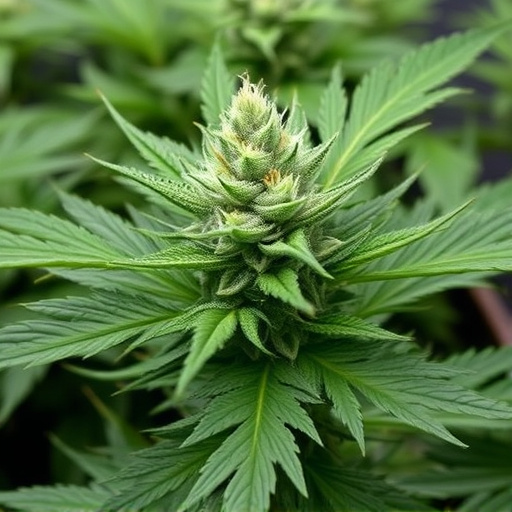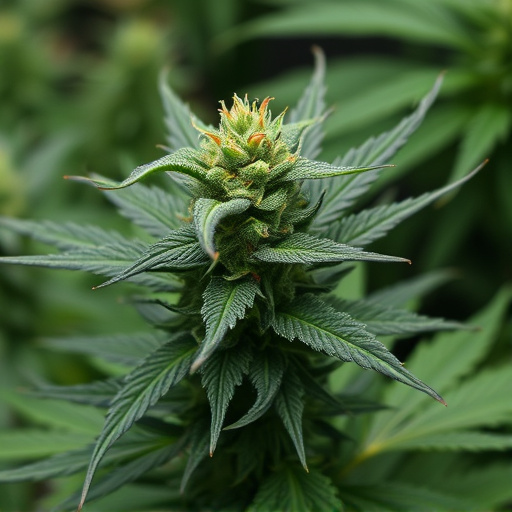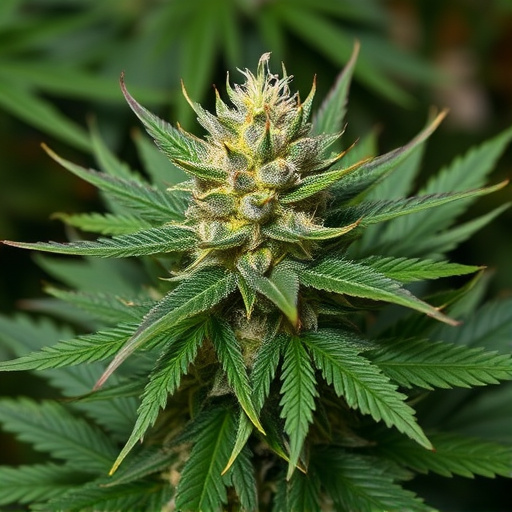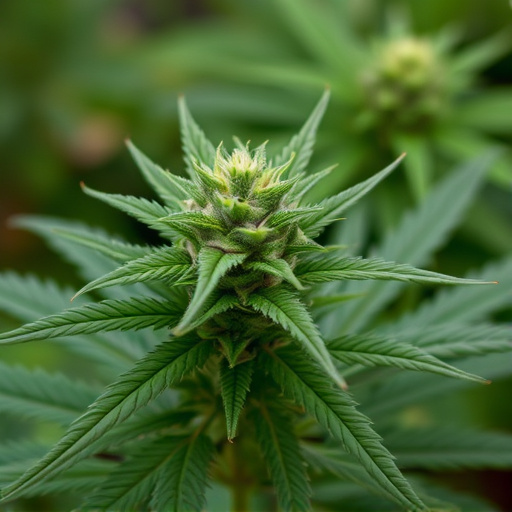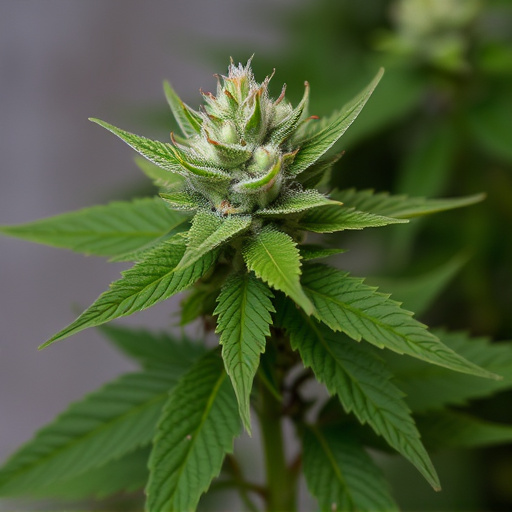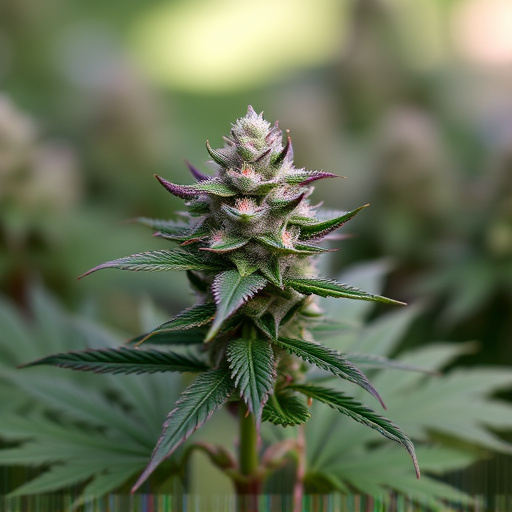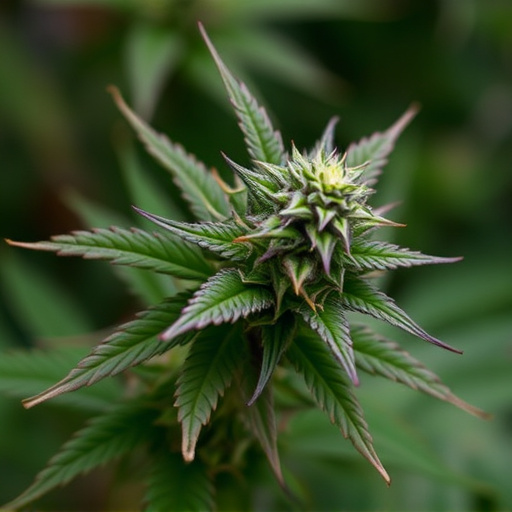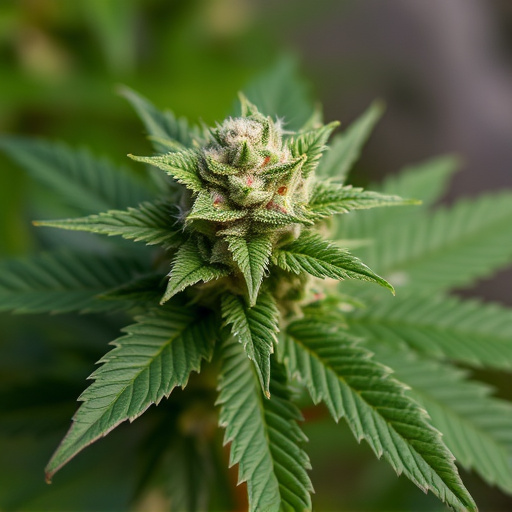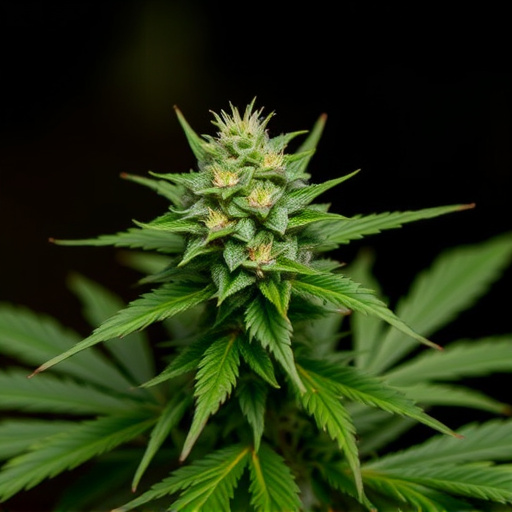Cannabis, particularly high-THC strains, can trigger "munchies" by stimulating the endocannabinoid system, which regulates hunger and may explain why patients with fibromyalgia experience increased food cravings during relaxation. Cannabis holds promise as an alternative treatment for fibromyalgia, with specific cannabinoid profiles in hybrid strains like Blue Dream or ACN offering targeted relief through THC's pain reduction and sleep improvement, while CBD has anti-inflammatory properties. Understanding different cannabis strains with varying THC and CBD levels is crucial for managing symptoms, with high-CBD strains popular for anti-inflammatory benefits; choosing the right strain depends on preferred consumption method (inhalation or edibles) for quick/sustained effect, respectively.
The “munchies”—the insatiable appetite that often accompanies certain states, like stress or pain—has long intrigued scientists. This article delves into the neurobiology behind these cravings, focusing on their connection with fibromyalgia and cannabis use. We explore how different cannabis strains can alleviate pain and stimulate appetite, providing a strategic approach to managing both symptoms using specific strains for fibromyalgia. Understanding these mechanisms offers valuable insights for those seeking natural relief.
- Understanding the Munchies: A Neurological Perspective
- Cannabis and Fibromyalgia: The Role of Different Strains
- Navigating Effective Strain Choices for Managing Pain and Appetite
Understanding the Munchies: A Neurological Perspective
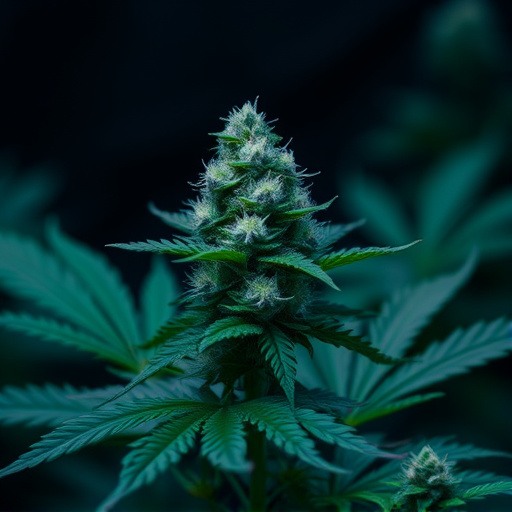
The “munchies,” or the intense desire for food, is a complex phenomenon often associated with cannabis use. From a neurological standpoint, this urge can be attributed to the intricate interplay between the endocannabinoid system (ECS) and various brain regions. The ECS is a regulatory network that maintains homeostasis, influencing appetite, mood, and memory. When cannabis strains, particularly those rich in THC, are consumed, they interact with the ECS, leading to a cascade of effects. This interaction can stimulate the hypothalamus, a key player in hunger regulation, causing an increased appetite.
For individuals managing conditions like fibromyalgia, certain cannabis strains have shown potential as complementary therapies. The anti-inflammatory properties of some strains may provide relief from pain and associated symptoms. Moreover, the stimulation of the ECS could explain why patients experience heightened cravings for food during these moments of comfort and relaxation induced by cannabis. This effect might be particularly relevant when considering cannabis as a therapeutic option for conditions like fibromyalgia, where appetite suppression is a common challenge.
Cannabis and Fibromyalgia: The Role of Different Strains

Cannabis has long been used as an alternative treatment for various conditions, including chronic pain and inflammation, which are common symptoms associated with fibromyalgia. The role of different cannabis strains in managing this complex disorder is a growing area of interest within the medical community. Research suggests that specific cannabinoid profiles found in certain strains can interact with the body’s endocannabinoid system to provide relief.
For individuals suffering from fibromyalgia, hybrid strains known for their balanced THC and CBD content have shown promise. THC, the primary psychoactive compound, may help reduce pain and improve sleep, while CBD, a non-psychoactive cannabinoid, possesses anti-inflammatory properties. Strains like Blue Dream, with its high THC content, or ACN (American Cannabis Network) strains known for their balanced profiles, could offer targeted relief for fibromyalgia symptoms. Exploring these cannabis strains for fibromyalgia may provide patients with another tool in managing their condition and improving overall quality of life.
Navigating Effective Strain Choices for Managing Pain and Appetite
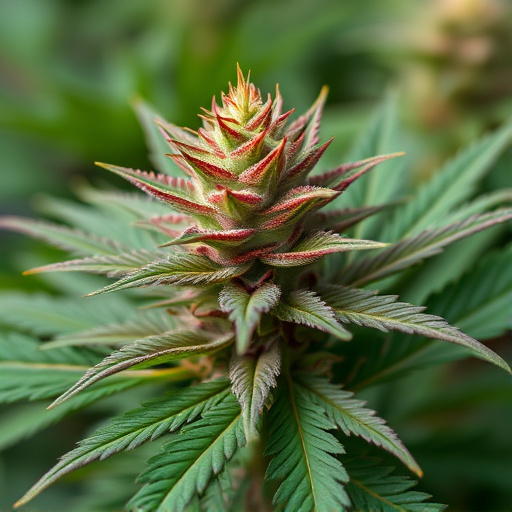
Navigating the vast world of cannabis strains can be a complex task, especially for those seeking relief from conditions like fibromyalgia. The right strain choices are crucial in managing both pain and appetite, offering a natural approach to symptom alleviation. Different cannabis strains possess unique chemical profiles, with specific compounds like THC and CBD having distinct effects on the body. For instance, high-CBD strains have gained popularity for their potential anti-inflammatory and analgesic properties, making them appealing for fibromyalgia patients aiming to reduce pain and improve mobility.
When selecting a strain, consider your preferred method of consumption, whether it’s inhalation or ingestion, as this influences the effectiveness and speed of delivery. Inhalation methods provide faster relief, ideal for acute pain management, while edibles offer longer-lasting effects suitable for maintaining consistent appetite and pain control throughout the day. Remember, everyone’s experience with cannabis is unique, so experimentation is key to finding the perfect strain that harmonizes with your body’s natural rhythm, offering both comfort and a sense of balance.
The science behind the “munchies” reveals a complex interplay between neurological signals and physiological processes. For individuals with fibromyalgia, tailored cannabis strains offer a promising approach to managing both pain and appetite. By understanding the unique effects of different strains, patients can make informed choices to optimize their well-being. Research in this area continues to evolve, offering hope for those seeking natural solutions to alleviate symptoms associated with fibromyalgia.

